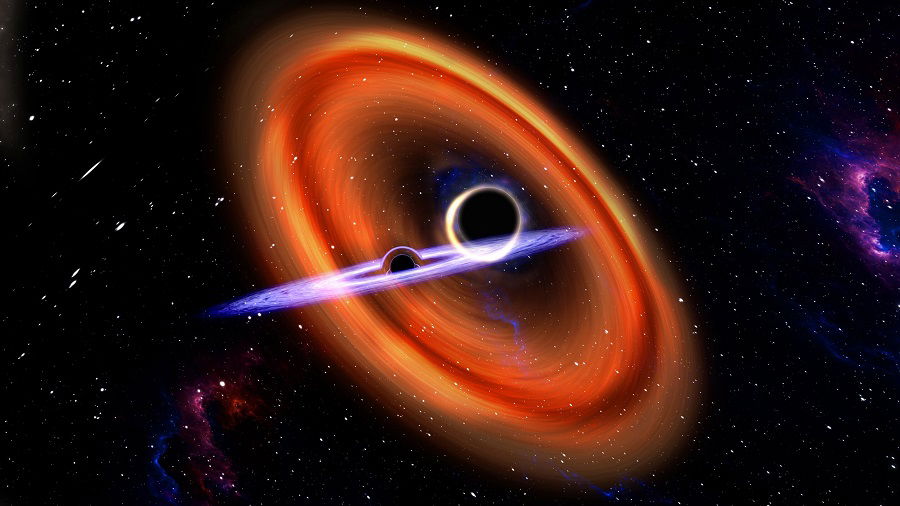Astronomers have detected two extraordinary gravitational wave events that may have come from black holes formed in earlier black hole mergers—what scientists call “second-generation” black holes. The findings, recently published, open new windows into the dynamic lives of black holes in the cosmos.
Gravitational waves are tiny ripples in the fabric of space and time caused by violent cosmic events such as the collision of black holes. These waves carry vital information about the masses, spins, and distances of the objects that created them. By carefully analyzing these faint signals, scientists can reconstruct stories of events that happened billions of years ago in distant parts of the universe.
In October and November 2024, researchers detected two unusual events: GW241011, which occurred about 700 million light-years from Earth, and GW241110, located roughly 2.4 billion light-years away. Each event involved two black holes colliding and merging into one larger black hole.
In GW241011, the black holes weighed around 17 and 7 times the mass of the Sun. Remarkably, the larger one was found to be spinning at an extremely fast rate—one of the fastest-rotating black holes ever observed.
A month later, GW241110 revealed another striking pattern: the larger black hole, about 16 solar masses, was spinning opposite to the direction of its orbit. This counter-rotating spin is something scientists had never seen before.
These unusual spin behaviors suggest that these black holes weren’t born from collapsing stars. Instead, they may be second-generation objects—black holes formed when smaller black holes previously collided and merged.
“With both events having one black hole much more massive and rapidly spinning than its companion, they provide tantalizing evidence for hierarchical mergers,” explained Stephen Fairhurst, professor at Cardiff University and spokesperson for the LIGO Scientific Collaboration. Such mergers likely occur in dense regions of space like star clusters, where black holes are close enough to repeatedly collide.
“These discoveries tell us that some black holes may live in crowded, dynamic neighborhoods rather than as isolated pairs,” added Gianluca Gemme, spokesperson for the Virgo Collaboration.
The precision of the GW241011 measurement also offered researchers a rare opportunity to test Einstein’s general theory of relativity under extreme conditions. The data matched the predictions of Einstein and mathematician Roy Kerr’s description of rotating black holes with remarkable accuracy.
The gravitational waves contained “higher harmonics”—faint echoes similar to musical overtones—that have only been observed a few times before. These harmonics confirmed another prediction of Einstein’s theory, once again proving it holds true even in the most violent corners of the universe.
Interestingly, the rapid spin of these black holes also helps physicists explore the frontier of particle physics. Some theories predict the existence of new, ultra-light particles called bosons that could slow down spinning black holes by stealing some of their rotational energy. However, because the black hole in GW241011 continues to spin so quickly, many possible masses for these hypothetical particles are ruled out.
“These discoveries remind us that every detection is both an astrophysical breakthrough and a test of the laws of nature,” said Carl-Johan Haster of the University of Nevada, Las Vegas. “They show how far we’ve come in using gravitational waves as a new window into the universe.”
The detections were made by the global LIGO-Virgo-KAGRA network of gravitational-wave observatories, which is now nearing the end of its fourth observing run. So far, scientists have recorded around 300 black hole mergers since the first detection in 2015.
Each new event deepens our understanding of how black holes form, evolve, and sometimes collide again—creating cosmic “echoes” that ripple across the universe and reach us millions or even billions of years later.
https://knowridge.com/2025/10/ripples-in-space-reveal-second-generation-black-holes-billions-of-light-years-away/
